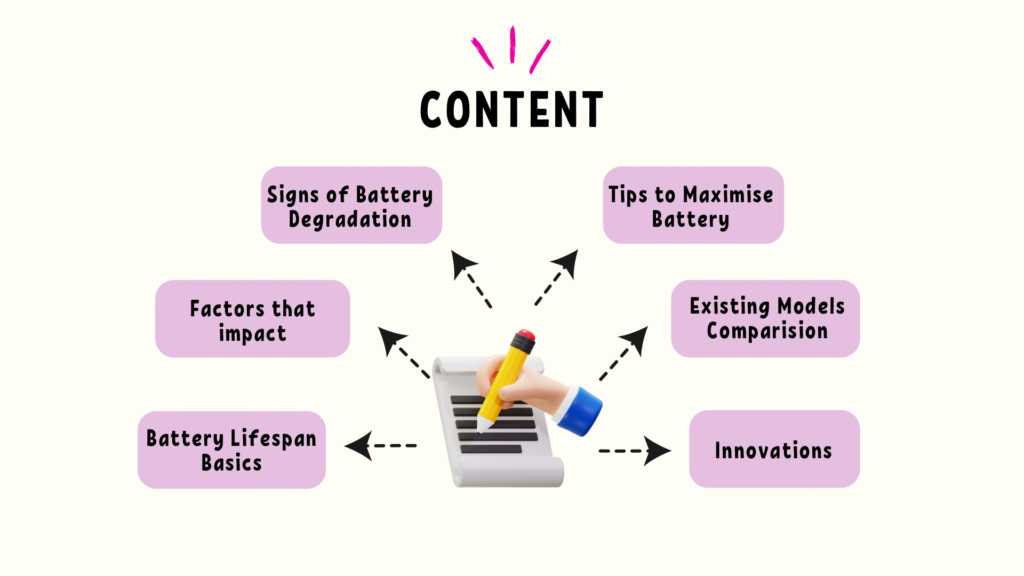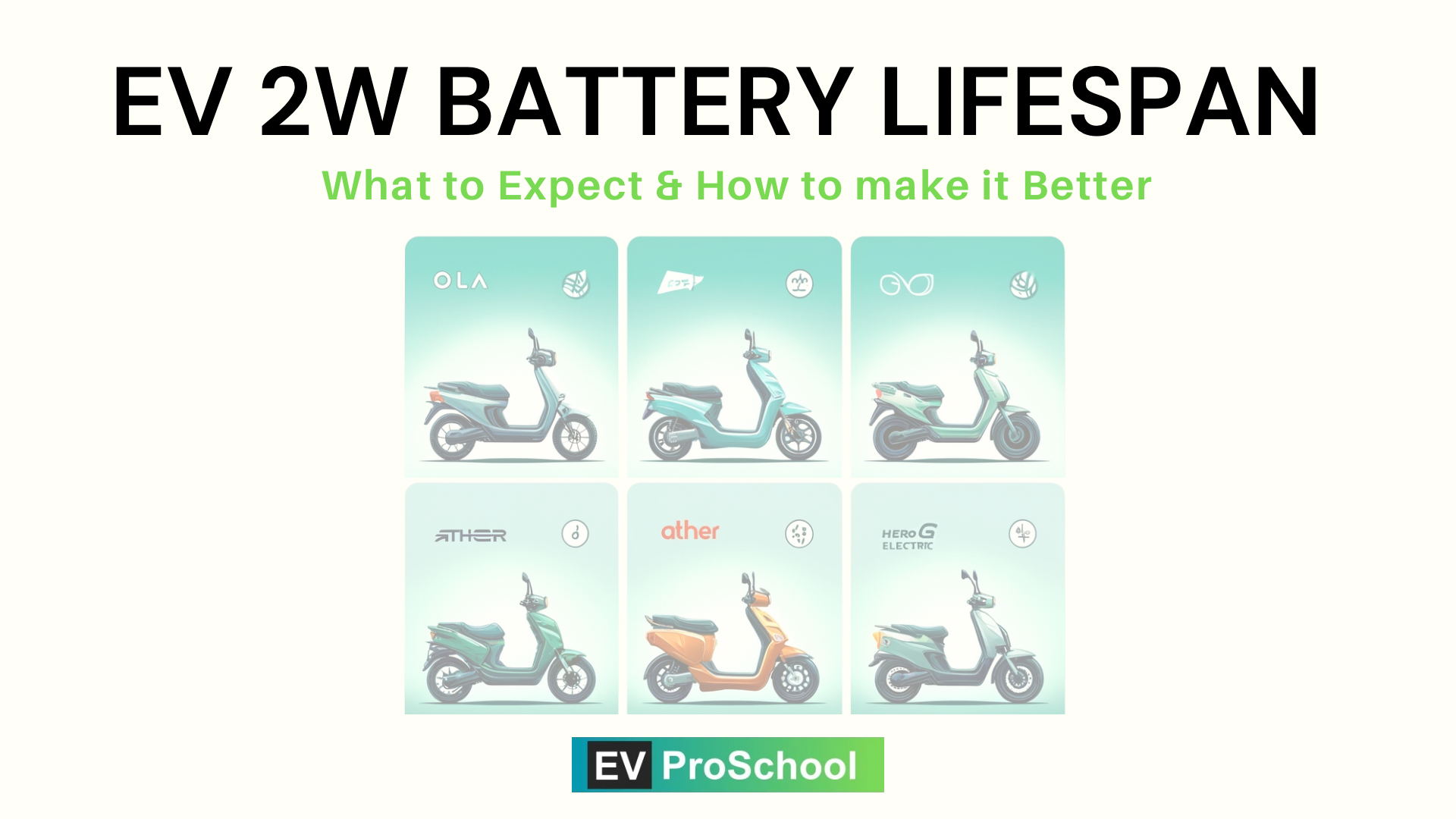Detailed Blog Post Strategy: “How Long Does Electric Two-Wheeler Battery Last?”
This blog post will explore the factors influencing the lifespan of batteries in electric two-wheelers, focusing on practical aspects like battery degradation, usage habits, charging behavior, and environmental conditions. It will avoid repeating technical details about battery chemistry or manufacturing covered in previous posts and instead provide a fresh perspective on real-world battery performance and practical tips to extend lifespan.
1. Objectives
Purpose:
- Help readers understand the factors affecting the lifespan of electric two-wheeler batteries.
- Provide actionable advice to maximize battery longevity.
- Explain real-world scenarios and trends that influence battery life in electric scooters.
Target Audience:
- Electric two-wheeler owners and potential buyers.
- Commuters, delivery riders, and fleet operators using 2W EVs.
- EV enthusiasts interested in optimizing battery health and performance.
2. Blog Outline
Title Options:
- Main Title: How Long Does Electric Two-Wheeler Battery Last?
- SEO-Friendly Title: Factors That Affect the Lifespan of Your Electric Scooter Battery
Introduction: Unlocking the Truth About Battery Lifespan
- Hook:
“Wondering how long your electric two-wheeler battery will last? The answer lies in how you use and care for it.” - Introduce the topic: Explain that while most batteries last 3–5 years or 1,000 charge cycles, real-world factors often determine actual lifespan.
- Preview the blog: “This post will explore the key factors affecting your battery’s lifespan, common challenges, and tips to make your battery last longer.”
Section 1: Understanding Battery Lifespan Basics
1. What Is Battery Lifespan?
- Define lifespan in terms of charge-discharge cycles (e.g., 1,000 cycles for most lithium-ion batteries).
- Explain how battery capacity diminishes over time:
- Example: A new battery with 100% capacity might retain 80% after 500 cycles.
2. How Manufacturers Estimate Battery Life
- Highlight manufacturer warranties based on cycles or years (e.g., “3 years or 30,000 km”).
- Explain real-world deviations caused by usage patterns.
Section 2: Factors That Impact Battery Lifespan
1. Charging Habits
- Overcharging: Leaving the battery plugged in after reaching 100% can accelerate degradation.
- Fast Charging: Frequent fast charging can generate heat, reducing cell life.
- Ideal Practices:
- Charge between 20% and 80% for optimal battery health.
2. Temperature and Climate
- Extreme Heat: Speeds up chemical reactions, causing faster wear.
- Cold Weather: Reduces battery performance temporarily but doesn’t permanently damage it.
- Best Practices:
- Store the vehicle in shaded or indoor spaces.
- Avoid charging in direct sunlight or freezing temperatures.
3. Riding Patterns
- Aggressive riding with frequent acceleration and braking drains batteries faster.
- Long, steady rides are better for battery health compared to stop-and-go traffic.
4. Load and Terrain
- Overloading: Carrying heavy loads (e.g., delivery packages) puts extra strain on the battery.
- Hilly Terrains: Climbing slopes consumes more energy compared to flat roads.
Section 3: Signs of Battery Degradation
1. Reduced Range
- Example: A battery that initially provided a 100 km range now only delivers 80 km.
2. Slower Charging Speeds
- Older batteries take longer to charge due to reduced efficiency.
3. Overheating During Use or Charging
- Excessive heat generation during normal operations can indicate internal degradation.
Section 4: Tips to Maximize Battery Lifespan
1. Smart Charging Practices
- Avoid fully draining the battery frequently.
- Use original chargers and avoid cheap, third-party alternatives.
2. Proper Storage
- If storing for long periods, keep the battery at ~50% charge.
- Store in a cool, dry place to prevent moisture damage.
3. Regular Maintenance
- Check for software updates from manufacturers that optimize battery performance.
- Inspect connections and terminals for wear or damage.
4. Use Eco Modes
- Utilize economy modes for daily commuting to reduce energy consumption.
5. Avoid Frequent Fast Charging
- Limit fast charging to emergencies and rely on regular charging for daily use.
Section 5: Real-World Battery Lifespan Examples
1. Commuters
- Average battery life: 3–5 years (or ~1,000 cycles).
- Use Case: Charging overnight with moderate daily use (~30–50 km).
2. Delivery Riders
- Average battery life: 2–3 years due to frequent charging and higher daily usage (~100–150 km).
- Heavy use of fast chargers and carrying loads shorten battery lifespan.
3. Fleet Operators
- Utilize swappable batteries for extended vehicle uptime.
- Batteries last ~2 years but are recycled/replaced quickly.
Section 6: Innovations to Improve Battery Longevity
1. AI-Driven Battery Management Systems (BMS)
- Predictive algorithms optimize charging and usage based on user patterns.
2. Advanced Battery Chemistries
- Solid-state batteries and cobalt-free chemistries offer longer cycle life and better durability.
3. Regenerative Braking Enhancements
- Systems that recover energy more efficiently reduce battery strain.
4. Modular Batteries for Easy Replacement
- Modular designs make it cost-effective to replace degraded sections instead of the entire battery.
Conclusion: Care Today, Lasting Performance Tomorrow
- Recap the importance of adopting good charging habits, maintaining optimal conditions, and monitoring for signs of degradation.
- Highlight how innovations are making batteries more durable and user-friendly.
- End with a call-to-action:
“Want to learn more about EV batteries? Check out our guide to maximizing battery efficiency and understanding battery innovations!”
3. Writing Style and Tone
- Tone: Informative yet practical, focusing on real-world scenarios and actionable advice.
- Use relatable analogies to explain concepts:
- “Think of your battery like a marathon runner—it performs best when properly maintained and given time to recover.”
4. Suggested Visuals and Graphics
- Graph: Battery capacity degradation over 1,000 charge cycles.
- Infographic: Best practices for charging and storing batteries.
- Comparison Table: Battery lifespan for different use cases (commuters, delivery riders, fleet operators).
- Real-World Example: Image of a rider using a charging station in urban settings.
5. SEO Optimization Strategy
Focus Keyword:
“Electric two-wheeler battery lifespan”
Supporting Keywords:
- Two-wheeler battery degradation
- How long EV batteries last
- Optimizing battery lifespan
- EV charging habits
Meta Description:
“Learn how long electric two-wheeler batteries last and the factors that impact their lifespan. Discover tips to reduce degradation, improve charging habits, and extend battery performance.”
Alt Text for Feature Image:
“Graph showing battery capacity decline over time for electric two-wheelers.”
6. Blog Length and Target Audience
- Word Count: 1,800–2,200 words to cover detailed explanations and actionable tips.
- Target Audience: EV owners, delivery fleet operators, and sustainability-conscious riders.
This strategy provides a fresh and practical perspective, addressing battery lifespan from the user’s point of view and offering valuable insights without repeating content from earlier posts.




